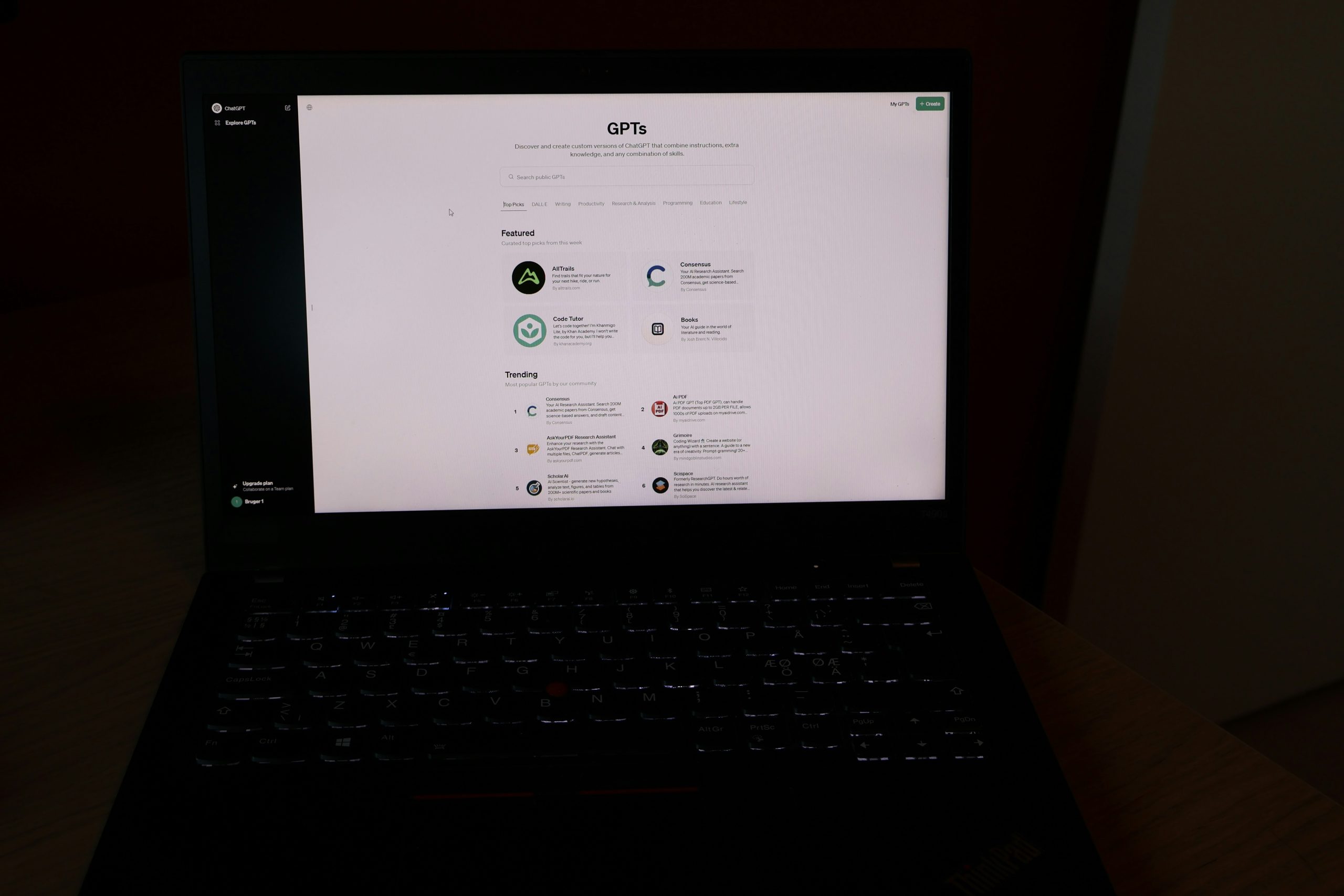In the ever-evolving landscape of artificial intelligence, the options available for enhancing productivity and creativity can be overwhelming. Imagine standing at a bustling crossroads where two paths diverge: one leads to ChatGPT, renowned for its conversational finesse and vast knowledge base, while the other beckons with Chatgot, an emerging contender promising a fresh take on interactive AI. As businesses and individuals increasingly turn to digital assistants for everything from brainstorming ideas to answering intricate queries, understanding which tool aligns best with your unique needs becomes crucial.
This article delves into the distinct strengths and weaknesses of both ChatGPT and Chatgot, exploring their functionalities through real-world applications. Whether you’re a seasoned tech enthusiast or someone new to AI tools, navigating this landscape requires insight into how each platform leverages language processing capabilities. Join us as we dissect features like user experience, versatility in various tasks, and how each model adapts to different use cases—ultimately guiding you toward making an informed choice that elevates your engagements with artificial intelligence.
Overview of ChatGPT Features and Benefits
ChatGPT stands out in the AI landscape thanks to its remarkable natural language processing capabilities. It can engage in fluid conversations, understand nuanced queries, and generate contextually relevant responses. This level of comprehension not only enhances user interaction but also allows for personalized experiences tailored to individual preferences. Users often find it invaluable for brainstorming ideas, drafting content, or even troubleshooting complex problems, as ChatGPT adapts seamlessly to varying tones and styles.
One of the standout benefits of ChatGPT is its accessibility—available across a range of platforms and devices, it empowers users on the go. The integration of robust learning algorithms ensures that the model continually improves over time by incorporating new information and feedback from interactions. Additionally, with options like fine-tuning models for specific industries or tasks, businesses can leverage ChatGPT’s versatility to enhance customer service, streamline internal processes, or create compelling marketing copy. Ultimately, whether you are an entrepreneur looking to optimize operations or a student seeking study assistance, ChatGPT offers tools that transcend conventional boundaries in AI communication.
![]()
Overview of Chatgot Features and Benefits
Chatgot distinguishes itself with an array of innovative features designed to enhance user experience and broaden its applicability across various domains. Chief among these is its intuitive user interface that fosters seamless interaction, making it accessible even for those less tech-savvy. The platform also offers customizable conversation flows, allowing users to tailor interactions according to specific needs—whether for customer support, educational purposes, or creative brainstorming. This flexibility not only saves time but also elevates the utility of Chatgot in real-world applications.
Moreover, Chatgot’s integration capabilities are noteworthy; it effortlessly connects with popular tools and platforms, ensuring that it fits smoothly into existing workflows. Its advanced natural language processing ensures a more nuanced understanding of context and sentiment, enabling richer conversations than many competitors can offer. Coupled with robust data analytics features, businesses can gain insights on user interactions that drive continuous improvement in engagement strategies. With these benefits at their disposal, users are empowered not just to engage but to cultivate deeper connections through conversational AI technology tailored precisely to their unique requirements.
Key Differences Between ChatGPT and Chatgot
When comparing ChatGPT and Chatgot, one of the most striking differences lies in their underlying architectures. While ChatGPT is built on OpenAI’s powerful GPT-3.5 framework, which excels in generating coherent text and understanding context through extensive training data, Chatgot employs a more streamlined model that prioritizes quick responses over depth. This fundamental design choice means that users seeking nuanced creative writing or complex problem-solving will likely lean towards ChatGPT, while those requiring fast answers for straightforward queries might find Chatgot to be more efficient.
Another notable distinction revolves around customization capabilities. ChatGPT offers various personalization features that allow users to tailor interactions based on specific preferences or use cases, making it ideal for businesses looking to integrate AI into customer service roles where brand voice is crucial. In contrast, Chatgot focuses on a broader set of generic applications; its simplicity makes it user-friendly but limits flexibility for specialized contexts. Therefore, your choice may hinge on whether you want high-level customizable interactions or immediate solutions without the need for advanced programming skills.

Use Cases for ChatGPT in Various Industries
In the realm of healthcare, ChatGPT can serve as a virtual assistant, streamlining patient interactions by answering common inquiries, scheduling appointments, and providing preliminary triage guidance. By harnessing its natural language processing capabilities, medical professionals can also utilize AI-generated summaries from lengthy patient records to enhance diagnosis accuracy and treatment planning. Such applications not only boost operational efficiency but also free up valuable time for healthcare workers to focus on complex cases that require human empathy and decision-making.
The retail industry is experiencing a paradigm shift as businesses leverage ChatGPT for personalized customer engagement. From recommending products based on individual preferences to assisting with real-time inventory inquiries, this technology transforms the shopping experience into something more intuitive and responsive. Moreover, retailers can use ChatGPT’s analytics capabilities to gauge customer sentiment through reviews and feedback, allowing them to make data-driven decisions that refine their offerings and enhance overall customer satisfaction.
In the education sector, educators are finding innovative ways to integrate ChatGPT into their teaching methodologies. It can provide tailored tutoring sessions for students struggling with specific subjects or simulate interdisciplinary discussions that foster critical thinking skills among learners. Furthermore, institutions could deploy it to automate administrative tasks such as grading quizzes or managing FAQs about curricula—ultimately allowing educators more time for one-on-one student engagement while ensuring a supportive learning environment remains at the forefront of educational priorities.
Use Cases for Chatgot in Various Industries
In the realm of customer service, Chatgot shines brightly by enhancing user experiences through its ability to manage complex inquiries efficiently. Imagine a retail environment where Chatgot can quickly resolve customer complaints or help users navigate product catalogs, significantly reducing wait times and boosting satisfaction rates. By employing natural language processing capabilities, it not only interprets questions accurately but also adapts responses based on previous interactions, making each exchange increasingly personalized.
In the healthcare industry, the potential for Chatgot is transformative. It can serve as an intelligent assistant for both patients and providers by scheduling appointments, providing information on symptoms, and even reminding patients to take medication. Such applications streamline operations in busy hospitals while offering patients immediate support without the stress typically associated with conventional healthcare services. Additionally, integrating Chatgot into telehealth platforms can foster greater engagement by ensuring that queries about health procedures are answered promptly and effectively.
Moreover, in education sectors tailored toward learning enhancement, educators leverage Chatgot’s capabilities to create immersive tutoring experiences. With its adaptive learning technologies, it can custom-tailor educational content according to individual student needs—identifying gaps in knowledge and adjusting lesson plans accordingly. This not only fosters a more inclusive learning environment but also cultivates independence among students as they engage with material at their own pace and level of understanding. As industries continue embracing AI-driven solutions like Chatgot, we are just beginning to scratch the surface of what’s possible in improving lives across various facets of society.

Performance Comparison: Speed and Accuracy
When evaluating AI performance, speed and accuracy often stand as the two pillars of effectiveness. ChatGPT has been fine-tuned for quick responses, striking a balance between rapid delivery and contextually relevant information. Users frequently sing its praises for maintaining conversational flow without significant lag, making it ideal for real-time applications such as customer support or interactive chatbots. However, this emphasis on speed can sometimes lead to trade-offs in depth and detail.
Conversely, Chatgot emerges as a formidable contender with an approach that prioritizes precision over mere immediacy. While its response times may not match the lightning-fast pace of ChatGPT, fascinated users note how Chatgot delivers richer insights and well-rounded answers. This delay allows it to engage in deeper interpretations of complex queries, catering excellently to fields like academic research or content creation where nuance matters and accuracy is paramount. Ultimately, your choice between these two AIs may hinge on whether you value lightning-speed interactions or prefer more thoughtful exploration of topics at hand.
Conclusion: Choosing the Right AI Tool
When choosing the right AI tool, it’s essential to consider not only your immediate needs but also your long-term vision. While ChatGPT and Chatgot each offer unique strengths—be it superior conversational capabilities or specialized applications—your selection should align with your specific use case. Reflect on whether you prioritize nuanced dialogue for customer interactions or advanced data processing for analytics; this clarity will guide you toward the tool that best complements your objectives.
Moreover, think beyond technical specifications and explore how the user experience will impact engagement. The adaptability of an AI tool to integrate with existing workflows can enhance efficiency significantly. Evaluate factors like ease of implementation, scalability, and community support when making a choice; these elements often play a crucial role in maximizing the value derived from the technology. By carefully assessing these aspects, you can confidently determine which platform truly fits your organization’s needs and empowers you to harness AI’s full potential effectively.
